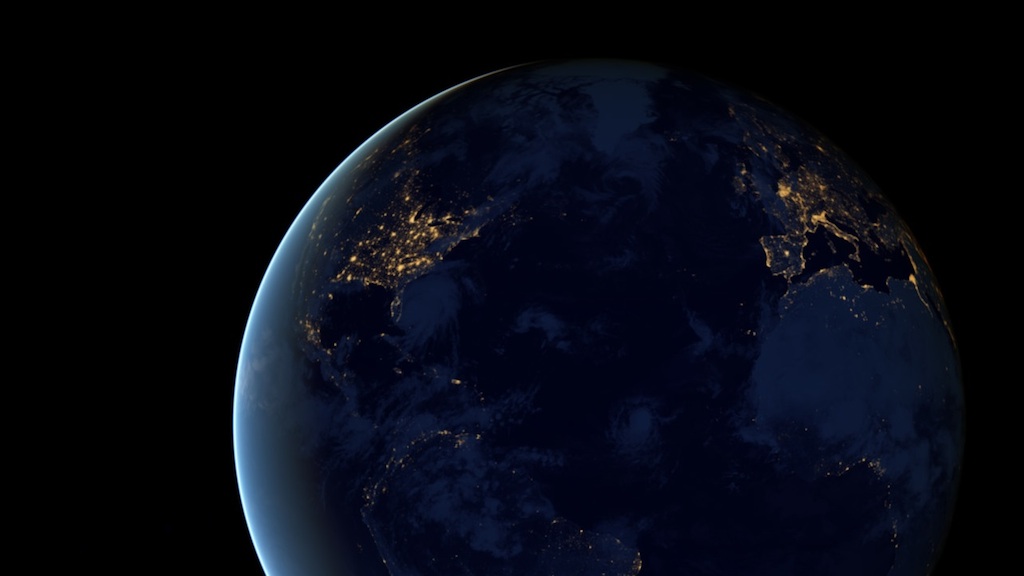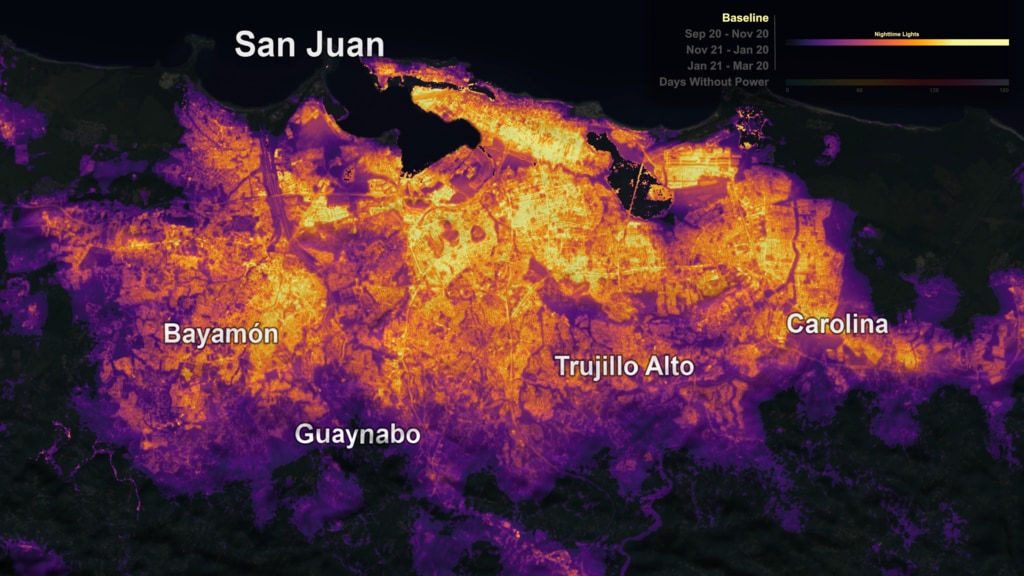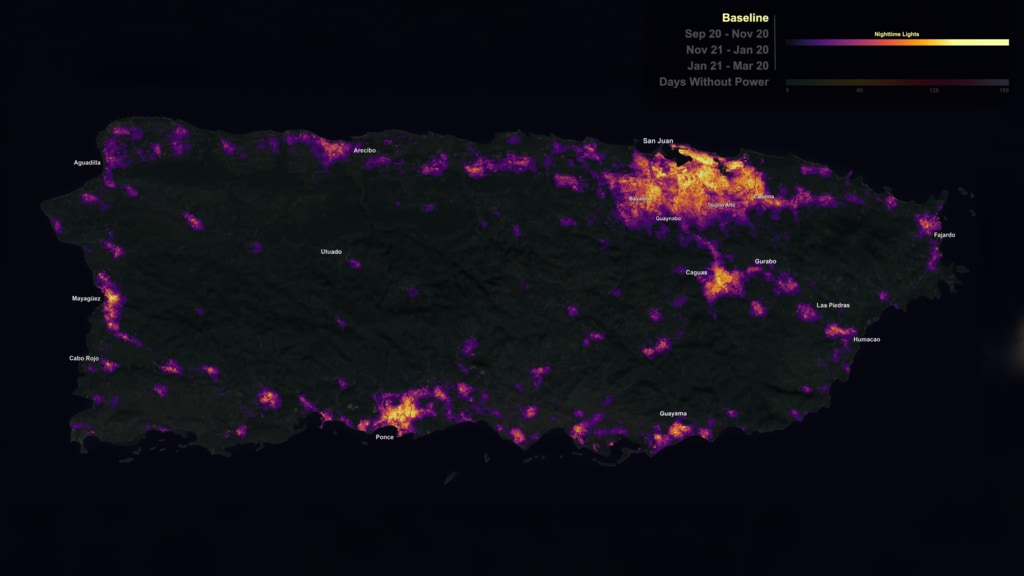Lights Out

Watch the lights come back on after the longest electricity black-out in U.S. history.
At night, Earth is lit up in bright strings of roads dotted with pearl-like cities and towns as human-made artificial light takes center stage. During 2017's Hurricane Maria, Puerto Rico's lights went out. In the days, weeks and months that followed, NASA researchers developed neighborhood-scale maps of lighting in communities across Puerto Rico. To do this, they combined daily satellite data of Earth at night from the NASA/NOAA Suomi National Polar-orbiting Partnership satellite with USGS/NASA Landsat data and OpenStreetMap data. They monitored where and when the electricity grid was restored, and analyzed the demographics and physical attributes of neighborhoods longest affected by the power outages. Power failures across Puerto Rico’s rural communities accounted for 61 percent of the estimated cost of 3.9 billion customer-interruption hours, six months after Hurricane Maria. These regions are primarily rural in the mountainous interior of the island where residents were without power for over 120 days. However, even more heavily populated areas had variable recovery rates between neighborhoods, with suburbs often lagging behind urban centers. The absence of electricity as seen in the night lights data offers a new way to visualize storm impacts to vulnerable communities across the entirety of Puerto Rico on a daily basis. Watch the videos to learn more.
Watch Puerto Rico's lights before and in the months after Hurricane Maria as electricity is slowly restored.
Tour before and after images of Puerto Rico's cities and towns.

Before Hurricane Maria, Puerto Rico's urban areas, primarily around the coasts, are brightly lit.

On September 20th, Hurricane Maria struck Puerto Rico, its path shown in red. The storm knocked out power for nearly the entire island.

The average light level three to four months after Maria shows urban centers beginning to recover.

The average light level five to six months after Maria shows power mostly restored, though rural areas still lag behind.
For More Information
See NASA.gov
Credits
Please give credit for this item to:
NASA's Scientific Visualization Studio
-
Animator
- Kel Elkins (USRA)
-
Producer
- Matthew R. Radcliff (USRA)
-
Scientist
- Miguel Román (NASA/GSFC)
-
Writer
- Ellen T. Gray (ADNET Systems, Inc.)
Release date
This page was originally published on Monday, April 1, 2019.
This page was last updated on Wednesday, May 3, 2023 at 1:46 PM EDT.


